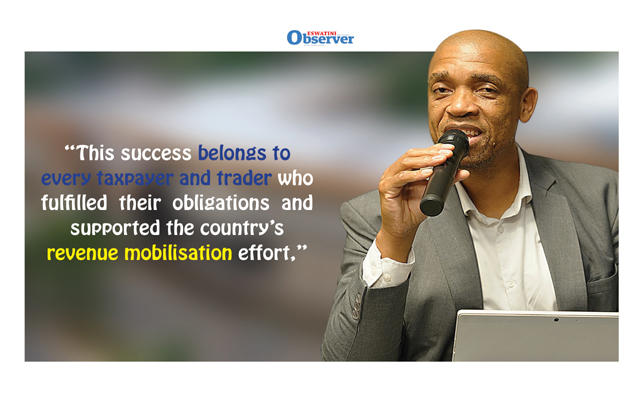By Daily Maverick | 2025-04-01
‘We’re not in a policy moment in the United States,” said Justin Hendrix. “It’s all about power.”
This was the statement that pretty much summed it all up. As the editor and CEO of Tech Policy Press, the New York City-based non-profit that had earned a global reputation for its reporting on the anti-democratic instincts of Big Tech, Hendrix wasn’t telling me anything I didn’t already know. Still, to hear it so blunt and conclusive was a shock.
The circumstances of the discussion with Daily Maverick had been deemed “not yet ready” for public consumption, which in itself was an indication of the seriousness of the threat – it was a given, accepted by everyone at the gathering, that if journalists were to have any hope of stemming the authoritarian tide, we would have to work around (and against) the universal reach of the tech giants.
And so, quite naturally, we had all been left wondering – were our ambitions childishly naïve?
Hendrix, for his part, wasn’t committing one way or another.
“The really hard part about all of this is that you can’t content-moderate your way out of fascism,” he said, which was perhaps another way of wording his opening remark.
Did this imply, then, that Hendrix felt it was too late? From his perspective, was the authoritarian impulse in Big Tech now simply too entrenched? And if so, was there any point at all of appealing to the checks and balances of policy?
Again, Hendrix was philosophically non-committal – every “yes” for him seemed to bring on its attendant “no”. But he did offer an insight into Daily Maverick’s specific area of focus that seemed, at least on the surface, to promise a way through.
“As you well know in South Africa,” he said, “that supremacist stuff was around for centuries before the online environment appeared on the scene.”
Indeed it was, I agreed.
As a prelude to our discussion, I had updated Hendrix on the local situation. I had told him about the advocacy groups Solidarity and AfriForum; about their “relatively successful” US-based campaigns to cast white South Africans as history’s victims, and about President Donald Trump’s consequent offer of refugee status to white Afrikaners.
I had informed him, too, of the perceived amplification of white supremacist voices on local X; of the hate and the race-baiting that the algorithms seemed to reward, and of the complaints of President Cyril Ramaphosa that “racist misinformation” was rife.
Finally, I had apprised him of the significance of South Africa’s case against Israel at the International Court of Justice; of the apparent fact that the sheer strength of the case was the real reason for Trump’s vendetta, and of the bizarre new alignment back home between Jewish Zionists and the Afrikaner right.
If Hendrix was familiar with any of these details, he hadn’t let on. This, on its own, was something of a relief – while our problems may have meant everything to us, I had thought, at least there was a whole world out there where they meant nothing to anyone at all. And yet, even in mid-March – a few days before the expulsion of Ambassador Ebrahim Rasool would catapult us back into the global spotlight – there was no denying that South Africa was a lightning rod for some truly transnational forces.
We were, as Hendrix had intimated, the former world champions of white supremacy.
As he was clearly aware, thanks to our widely celebrated post-apartheid Constitution, we had been spared the worst of the ideology’s offline ravages for almost three decades. But, to paraphrase his insight, the “online environment” had revitalised the racist scene – and here, since there was no legislation to speak of, we were once again at the mercy of the retroactive mob.
The day before our discussion, I had found ample evidence of the policy gaps that had rendered South Africa vulnerable to its old ghosts. As an understatement, the entry for our country on the website of the International Trade Administration – beneath the header “Online Harms Regulation” – was difficult to beat:
“South Africa does not have a comprehensive, specific framework regulating online harms such as disinformation, hate speech, and online abuse. The country is still developing a regulatory framework for addressing online harms and digital content moderation. This gap leaves businesses and users without clear guidance on their responsibilities or protections.”
In other words, as far as the new white supremacists were concerned, South Africa was once more a race-baiter’s paradise. As in the rest of the world, if our lawmakers intended to draft legislation that had any hope of reversing the trend, they would have to overcome the difficulty of balancing the right to freedom of expression against the duty to protect our citizens from online harms.
Until then, in the framework of Trump’s ascendant techno-verse, all our protections were destined to be subsumed by the resurgent psychoses of the far right.
From paradise to genocide and back again
In late March 2025, Michael Ignatieff, an author and academic who once served as the leader of the Liberal Party in Canada, attempted to “decode the historical narrative” that had returned Trump to the White House. For Ignatieff, a former winner of the Orwell Prize for his work on American interventionism, the key was Trump’s “angry nostalgia” for the lost paradise of the 1950s and early ’60s – a utopia that in his view had been destroyed by the free trade globalists, who had not only caused the closure of American factories but (far worse) had lent their support to China’s spectacular rise.
“Trump’s vision of the past as a story of ‘American carnage’,” Ignatieff wrote, “is a story of angry imperial decline. In a country built on hope, it would never have cracked a more hopeful liberal narrative had it not been for the coming of the Internet, the smart phone and social media.”
What Ignatieff was taking for granted here, of course, was the fact that the contemporary online world had been tailor-made for wrath – a truth backed up by the profitability of “rage farming” and other division-sowing techniques.
“Trump, more than any other competitor for power,” he went on, “grasped that the new technology enabled him to leap over the gatekeepers, in the legacy media, the think tanks, the Republican Party apparatus and reach millions of voters with a narrative of nostalgia, bitterness and disenchantment that seemed, for the first time, to make sense of what they were living.”
Likewise, in the “new” South Africa, where nostalgia for the past had always gone hand-in-glove with the bitterness of the disenchanted, the soil was practically begging for the fecund seeds of rage. And who better to plant those seeds than the country’s most infamous and deviant son, now Trump’s consigliere and bagman, who had fled our native shores for North America before our first black president had taken his oath?
On 24 March 2025, the day after Ignatieff’s piece was published, Elon Musk sent out a missive to his 220 million followers on X, leaving us in no doubt as to his feelings about the country of his birth.
“The legacy media never mentions white genocide in South Africa,” Musk declared, “because it doesn’t fit their narrative that whites can be victims.”
Musk, of course, had been reacting to the predictable gambit of Julius Malema, one of South Africa’s most accomplished populist politicians. Ever the opportunist, and fully aware that his ratings were dropping through the floor, Malema had read the tea leaves and decided that now was the time to break out again with Kill the Boer; an old struggle song that had never resulted in the mass slaughter of whites, and likely never would.
And so, whatever else it was, Musk’s tweet was a veritable masterpiece of online rage-baiting. For starters, there was the anger of the silent majority, those who understood that the idea of a “white genocide” was nothing more than the conspiracy of bitter supremacists, and who were therefore justifiably pissed at the malice of the disinformation.
Then there was the righteous indignation of the bitter supremacists themselves, those who were well and truly hooked on the hate-juice of the algorithm, and who were therefore punching the air in wild-eyed praise of their messiah. Last, there was the more sober anger of those who knew what was actually going on, and who were therefore pointing us all at the brutal truth that was lying in wait.
“If the conversation is about moral high ground,” tweeted Phumzile van Damme, a former parliamentarian and anti-disinformation activist, at US Secretary of State Marco Rubio, “then perhaps open your doors to Palestinians who are experiencing the full weight of genocide, displacement, dispossession, and violence.”
Like Musk, as Van Damme was well aware, Rubio had jumped on Malema’s Kill the Boer chant to amplify the lie that white South Africans were in mortal danger – and, as a result, were in urgent need of US asylum.
Still, as a disinformation specialist, Van Damme had easily determined that the “genocide threat” was a cynical and manipulative blind. This was because the actual genocide had resumed in Gaza just a few days before, after Israel had broken the ceasefire to commit what its own left-wing media had termed “the largest child massacre in its history”.
We were, by necessity, back at South Africa’s case against Israel at the International Court of Justice. As was now becoming the trend, the Trump administration was actively punishing us for our belief in the Universal Declaration of Human Rights.
Techno-fascism or bust
“If you over-moderate people,” said Hendrix, “you give them a talking point that effectively helps them win.”
His insights, I knew, were more than likely the truth. But I also knew that Hendrix had published a vast archive of in-depth journalism that had confirmed the malign influence of Musk.
Take, for instance, the piece that was published on Tech Policy Press in mid-November 2024, under the headline “New Research Points to Possible Algorithmic Bias on X”.
“While we cannot definitively ascertain whether engineers at X intentionally amplified one political side over the other,” the piece concluded, “the observed patterns suggest that X’s content algorithm elevated posts from Elon Musk and those he seeks to support, further warping the platform around his worldview and politics.”
Or the article that was published in late February 2025, where Tech Policy Press considered the implications of the European Union merging its “Code of Practice on Disinformation” with its (much larger) Digital Services Act.
“The Code’s integration comes as Europe’s ‘super-regulator’ status fuels transatlantic tensions,” noted Hendrix’s associate editor Ramsha Jahangir, “placing EU tech rules at the centre of a growing US-EU standoff. As Washington watches, will Brussels’ regulatory resolve crack under pressure?”
This, it turned out, was the trillion-dollar question – because, as JD Vance had threatened back in September 2024, the US would “reconsider Nato support” if the EU insisted on regulating Musk’s X.
By early March 2025, just a few days after Vance had effectively blown up US-Nato relations anyway, the DSA tracker at Tech Policy Press reported that the EU was holding firm. But by that point, it wasn’t only Musk they were up against – in early January, acknowledging that it would inevitably lead to Facebook publishing “more harmful content,” Meta’s Mark Zuckerberg had announced that he was getting rid of his fact-checkers.
The offline damage, according to human rights experts, was likely to be horrific. As Amnesty International reported on 17 February 2025, Meta’s new policies alone were expected to fuel “more mass violence and genocide”. The organisation, it turned out, was not indulging in hyperbole.
“As has been well documented by Amnesty International and others,” it noted, “Meta’s algorithms prioritise and amplify some of the most harmful content, including advocacy of hatred, misinformation, and content inciting racial violence – all in the name of maximising ‘user engagement,’ and by extension, profit. Research has shown that these algorithms consistently elevate content that generates strong emotional reactions, often at the cost of human rights and safety. With the removal of existing content safeguards, this situation looks set to go from bad to worse.”
Back in South Africa, meanwhile, we were seeing the consequences play out in real time. How, for instance, had Solidarity and AfriForum garnered so much attention from local media – as Daily Maverick’s Rebecca Davis had asked – if they were essentially lying to us about their links with high-ranking lawmakers in Washington, DC?
By the same token, as News24’s Qaanitah Hunter had asked, why was businessman Rob Hersov all of a sudden declaring – at a BizNews conference in Hermanus – that black peoples’ reliance on economic empowerment was a function of their fear of “white excellence”?
The answer, quite clearly, was that white supremacy was back in vogue. The owners of X and Meta, in service of Trump’s authoritarian impulse, were pretty much done pretending – both commercially and ideologically, for them, techno-fascism was the way to go.
By any account, in South Africa, the societal gains of the past 30 years were in real danger of unravelling. And in this context, while the cautions of Hendrix were important, it was probably preferable to have some regulation than to have no regulation at all.
Put another way, since our country was destined to remain a lightning rod – first, because we were unlikely to back down on holding Israel to account; and second, because we would always be a breeding ground for world champion white supremacists – it was probably advisable for our lawmakers to take a leaf out of the EU’s book.
What was stopping us, for example, from passing legislation to demonetise disinformation and empower social media users and fact-checkers?
The answer, of course, was “nothing” – aside from the techno-fascists themselves. DM
share story
Post Your Comments Below
SPECULATION over the change of ownership of the country’s oldest newspaper was put ...

BUSINESS Eswatini (BE) President Mvuselelo Fakudze and Chief Executive Officer (CEO) E. Nathi Dla...

YESTERDAY, exciting developments unfolded for local artists as the Eswatini Copyright and Neighbo...

Eswatini Revenue Service (ERS) has recorded revenue collection of E14.6 billion for the 2024/25 f...
All material © Swazi Observer. Material may not be published or reproduced in any form without prior written permission.
Design by Real Image Internet